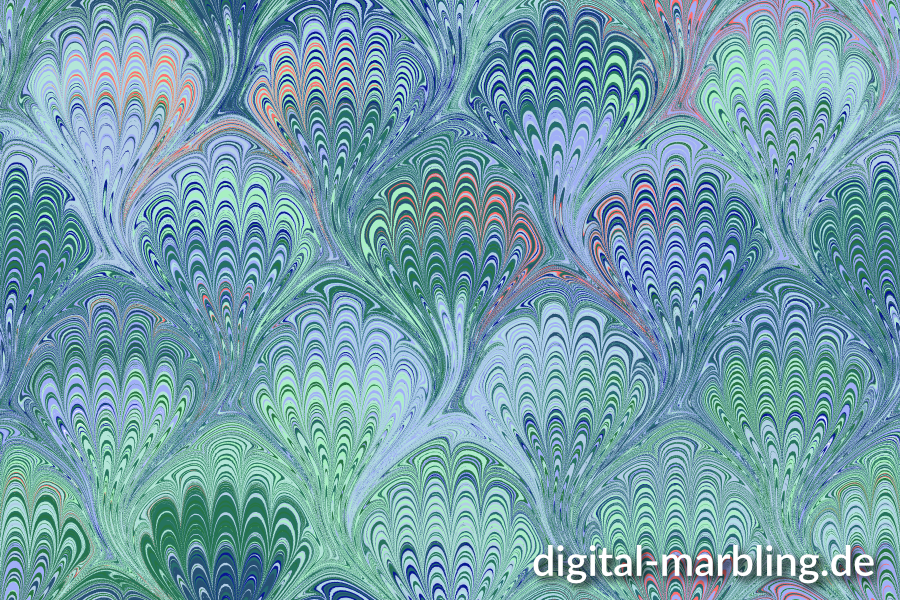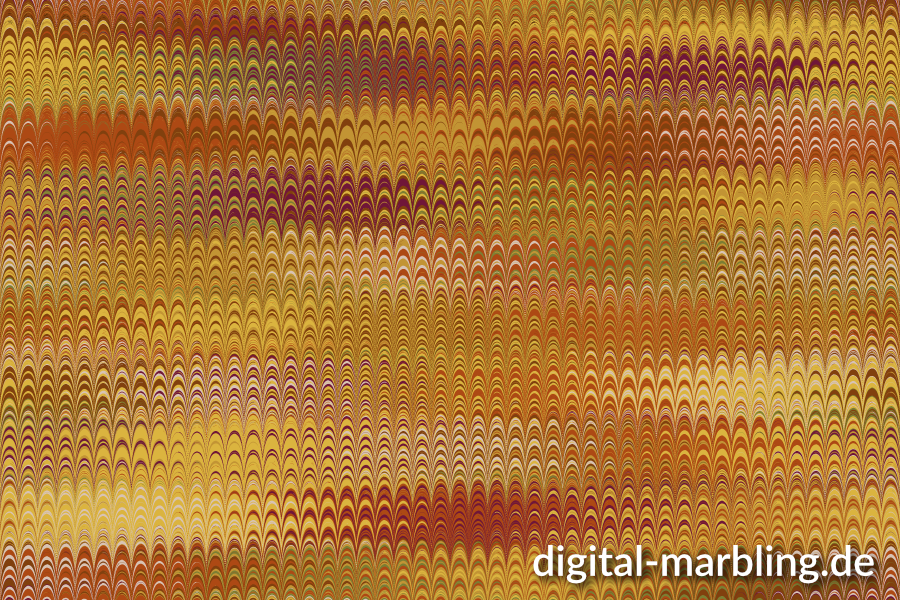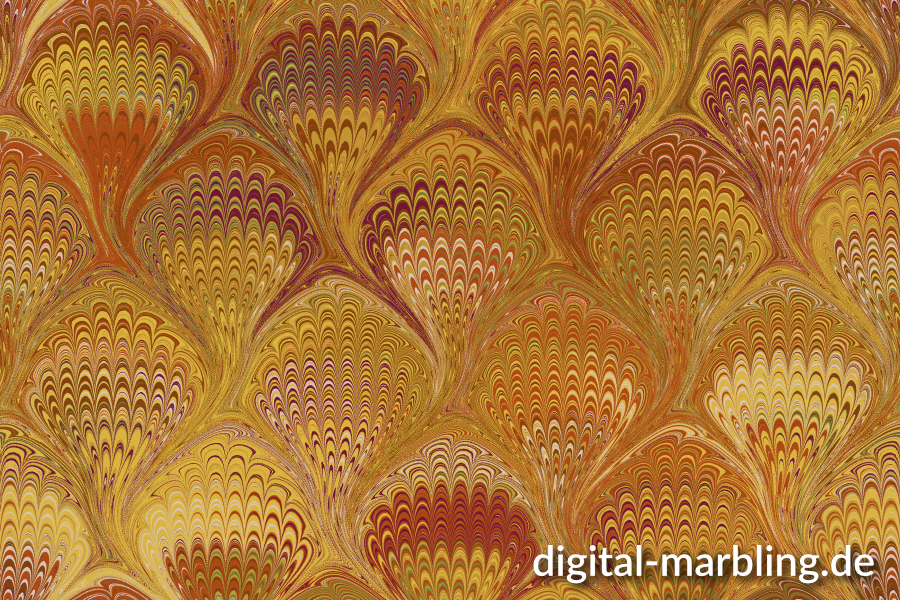
Bouquet
The Bouquet pattern is one of the most well-known of all the traditional marbling patterns. It is made from a Nonpareil pattern by two offset top-to-bottom waves. These waves are arranged in such a way that they bundle the nonpareil elements like flowers in a bouquet.
Many marblers seem to use the names Peacock and Bouquet interchangeably. However, Miura makes the distinction, and I think the patterns are different enough to warrant it.
The Amicis Librorum books are three very nice examples of the Bouquet pattern.

In some examples of the Bouquet/Peacock you find the flowers/feathers pointing upwards in parallel, like in the following image. In other cases, they spread out, as in the image above. Personally, I find the spread out version more attractive.

This unusual variant of the Bouquet pattern was obtained by using a very coarse Nonpareil as a base pattern.

For this close-up image, I started with parallell bands of colour like this. That’s easy enough to do on the computer, of course; However, I’m not sure if it’s possible in real life.



How to make the Bouquet pattern
The first stage to make the Bouquet pattern is a narrow left-right Gelgit.

The second stage is to make a downward Nonpareil with another narrow comb:

The third step is a downward wavy line with a wide rake: The result looks like the Serpentine pattern.

The fourth and final step is a second downward wave with the wide rake, but with a phase difference of π/2 compared to the first wave:

(In real life, these last two steps are made at the same time using a rake with two offset rows of tines.)
0 Comments